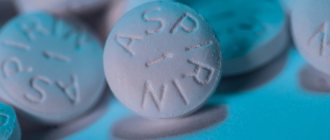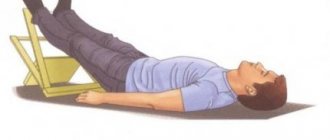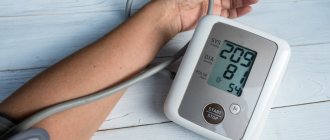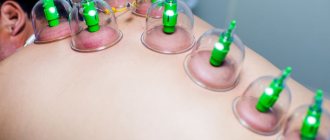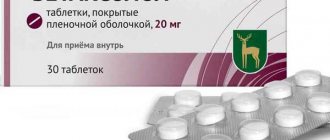Release form and composition of mustard plasters
Today, pharmacies sell mustard plasters, which are very different from those that have been known to us for many years. Now these are products with mustard powder, which are packaged in convenient bags and heat up much more strongly. Among them are:
- Classic mustard plaster, made in the form of a rectangular paper plate (approximate size - 8 by 12 cm). One side of the sheet is covered with a thin layer of mustard powder and a special gel necessary to hold the mixture.
- Packaged mustard plasters based on natural mustard powder, cake and crushed spice kernels (approximate size - 9 by 13 cm). In some cases, it may contain essential oils, such as eucalyptus. The medicinal mixture is placed in special closed bags made of non-soaking paper or a combined material.
The drug is dispensed at the pharmacy without a doctor's prescription, however, it is prohibited to use this method of treating high blood pressure without a doctor's testimony, otherwise the patient's condition can greatly worsen.
The cost varies from 10 to 200 rubles per package of the product.
When choosing mustard plasters, you need to pay attention to their appearance and shelf life (about 1.5-2 years), taking into account the following features:
- The film should not lag behind the paper, and the powder should spill out of the bag, which indicates that the product has expired.
- When wet, mustard plaster should not emit a musty and sour smell.
- As a rule, pale-colored powder does not have a beneficial effect. The real powder is bright yellow with small dark inclusions.
If you choose the right warm compress, it will have the desired therapeutic effect on the body and can effectively reduce high blood pressure.
Where to put it when the pressure rises
In order to reduce pressure, you can put mustard plasters on your calves, shoulders and neck. Warming the feet is highly effective, but for this purpose, not mustard plasters are used, but dry mustard, which is dissolved in warm water to prepare a foot bath.
People's skin has different sensitivities, therefore, when choosing a place for application, you need to take into account the risk of burns in areas with more delicate and sensitive skin.
There are recommendations according to which mustard plasters for hypertension are fixed on the chest in the occipital and cardiac zone. But these methods of relieving hypertension are more dangerous, so most recommendations boil down to fixing mustard plasters on the calves and forearms. In addition, it can be difficult to place mustard plaster on the back of the head correctly because of the hair.
Therapeutic effects of mustard plasters on the body
The essential oil that is part of the spice, when in contact with the skin, causes irritation of epidermal cells, gives a warming (feeling of warmth) and analgesic effect. As a result of local inflammation, reflex reactions begin in the body - body temperature rises slightly, pain subsides, blood flow improves, tissues and blood vessels dilate.
Poultices and compresses based on hot spices have been used since ancient times to alleviate many diseases. Among them:
- Upper respiratory tract lesions (colds, rhinitis, cough).
- Lung diseases (bronchitis, pneumonia).
- Sinusitis.
- Muscle inflammation.
- Angina pectoris.
- Radiculitis.
- Osteochondrosis.
- High blood pressure, including hypertension and hypertensive crisis.
- Local pain.
- Crick.
- Neuralgia (nerve damage with painful attacks).
For hypertension, mustard plasters began to be used quite recently, and they are a kind of distracting remedy that, in addition to the warming effect, helps:
- dilate blood vessels and make them more elastic;
- improve blood circulation;
- normalize blood pressure.
The essential oils and phytoncides contained in mustard powder have numerous beneficial properties, making it possible to reduce headaches in hypertensive patients, as well as stop the proliferation of viruses and bacteria in the body.
Contraindications to the procedure
Like any other medicinal product, mustard plasters also have their contraindications. They are strictly prohibited from being used in the following situations:
- Increased body temperature.
- Tendency to allergies to the components of a warm compress.
- Pulmonary hemorrhage.
- Exhaustion.
- Bronchial asthma.
- Violation of the integrity of the skin - rash, ulcers, wounds.
- Skin diseases - psoriasis, atopic dermatitis, neurodermatitis, etc.
- Pregnancy, regardless of trimester.
- Presence of cancerous tumors.
- Phlebeurysm.
- Tuberculosis.
- Cramps.
- Reduced skin sensitivity.
If these contraindications exist, it is prohibited to use mustard plasters to reduce high blood pressure. In other cases, they are an excellent adjuvant treatment and help avoid stroke.
Possible side effects
If the rules of use are not followed and the quality of the warm compress is poor, they can cause the following side effects:
- allergy;
- skin itching;
- nausea;
- dizziness;
- difficulty breathing;
- redness of the area where the warm compress was placed;
- burn;
- severe burning at the place where the compress was applied.
In addition, mustard plasters can slightly increase body temperature. All these complications should not last long.
If the skin turns red during the procedure, then this is normal, that is, after some time it should take on its normal appearance. If the irritation lasts more than 3 hours, then in the future it is worth abandoning this method of treatment in favor of safer means.
Mechanism of action
Mustard plasters are made from defatted mustard seed powder. It is applied to a sheet of thick paper 8x12 cm or poured into a two-layer paper bag.
The local irritating effect on the skin occurs due to the high content of mustard essential oil in the powder. Dissolved in water, upon contact with skin, has the following effect:
- dilates blood and lymphatic vessels of the skin, tissues, and underlying organs;
- increases the temperature of a specific area of the body, creating a feeling of warmth.
This action stops inflammatory processes and relieves pain.
The effect of a warming agent on human blood pressure
When blood pressure rises, blood vessels begin to contract chaotically, blood circulation and heartbeat accelerate. The body becomes more excited, the neurons in the brain contract, and it begins to work at an accelerated pace.
The first signs of increased blood pressure are:
- severe headache in the temporal region;
- swelling of the tissues of the face and limbs;
- dizziness;
- anxiety, mood swings;
- drowsiness and lethargy;
- deterioration of mental activity;
- increased frequency of urination.
Is it possible to put mustard plasters on high blood pressure? Mustard plasters can most effectively reduce blood pressure at the initial stage of the disease, before it becomes more severe.
In addition, they can be used against the background of a hypertensive crisis, which will avoid serious health complications and reduce high blood pressure in a timely manner. However, auxiliary measures in this case will not be enough and the patient will need to undergo medication prescribed by the doctor.
Since mustard plasters have a local effect, they need to be installed on certain areas of the body. When the powder is heated, its active components penetrate the body and have the following therapeutic effect on it:
- normalize the level of excitability;
- improve the functioning of the circulatory system;
- relax the walls of blood vessels;
- strengthen the immune system;
- tone the body.
The use of mustard plasters for high blood pressure allows the blood vessels to expand, resulting in a decrease in pressure in the vessels of the brain and blood flowing from the head.
Indications and placement locations
Mustard plasters are used to treat adults and children over 2 years of age with conditions such as:
- diseases of the upper and lower respiratory tract: tracheitis, rhinitis, pharyngitis - back of the neck, upper chest, calves, legs;
- lung diseases: bronchitis, pneumonia - the lung area in front, behind, on the sides of the chest;
- acute attack of angina – heart area;
- a sharp increase in blood pressure, hypertensive crisis, headaches due to hypertension - calves, back of the neck, feet;
- inflammatory damage to skeletal muscles - the area of the affected muscles;
- peripheral nerve damage - affected area.
Poultices, compresses, and foot baths with mustard are also used to relieve unpleasant symptoms and alleviate various diseases.
How to use mustard plasters to normalize blood pressure
In order for the mustard composition to begin its therapeutic effect, you need to wet a leaf or bag of the product in hot water (without changing the horizontal position, lower it into the water for 15 seconds), and then put it on a certain area of the body - depending on the type of disease. And if adults apply the powder part of the leaf to the skin, then children are advised to turn it to the other side so as not to cause a skin burn.
Why do you need to wet mustard plasters? The therapeutic effect when applying a burning compress begins if it is moistened in water at a temperature of 40-45 ° C, since healing oils begin to be released from it.
To keep the mustard plaster warm, you can put a terry towel, a blanket or wrap it in film, and press it tightly to the body with elastic bandages and bandages.
The whole procedure takes about 5-20 minutes, but if a strong burning sensation occurs earlier, then the mustard plaster is immediately removed and the skin is thoroughly cleansed of the powder. For children, apply the compress for 2-10 minutes until redness appears.
On what areas of the body mustard plasters are placed?
As a rule, mustard plasters for high blood pressure are placed on the head (neck and back of the head), calves, legs, lower back or shoulders. You can also make foot baths.
Not just mustard plaster
In the event of an attack of hypertension on your body, you can use the following methods to combat the crisis, which is one of the most common causes of death (according to WHO):
- apple cider vinegar diluted in water will give a noticeable reduction in pressure within twenty minutes if applied in the form of compresses to the feet;
- ice water in the form of foot baths gives tangible results;
- if there is a sharp jump in pressure, you need to lie on your stomach, burying your face in a pillow, while applying ice to the back of your head;
- Breathing exercises give good results: you need to hold your breath for a minute, then inhale slowly - the procedure is repeated 5-6 times.
Each hypertensive patient should master several options for counteracting a crisis, which can await any patient at the most inconvenient place and time.
How to cure a burn after mustard plaster?
A burning compress is not a harmless remedy and, if the rules and terms of use are not followed, it can cause 1-2 and even 3-degree skin burns (for example, if a person fell asleep with mustard plaster).
A burn after using the product is indicated by severe redness, swelling of the tissues, swollen blisters of the skin (sometimes with blood content), as well as traces of hemorrhages. In this case, it is necessary to urgently provide first aid to the person and seek medical help. The doctor will determine the area of tissue damage and, if the burn is 2-3 degrees, will prescribe treatment in a hospital, and if the burn is 1 degree, will prescribe home treatment.
To begin with, it is important to completely remove the irritant (particles of mustard powder) from the affected area by washing the skin with cool water and applying an antiseptic. Among the pharmaceutical products used:
- Hydrogen peroxide or chlorhexidine bigluconate are suitable as a disinfectant.
- For unbearable pain, it is better to take a painkiller, as well as an antihistamine and a sedative.
- To accelerate tissue healing, regenerating ointments and gel compositions are used, for example, Solcoseryl, Panthenol.
It is forbidden to lubricate a freshly affected area with oils and fatty cosmetic creams, as they create an oily film on the body that does not allow fresh air to penetrate the wound and cool it. These compositions can be used after wounds have healed and inflammation has been relieved.
It is recommended to use cooling compresses based on cabbage leaves, carrots and raw potatoes. Vegetables are thoroughly chopped, wrapped in gauze and applied to the affected area. You can also use a towel soaked in a decoction of herbs: chamomile, calendula, sage, St. John's wort. Aloe and chilled fermented milk products (kefir, sour cream) are no less useful.
If there are no positive results, seek help from a specialist.
DIY mustard plasters
If you don’t want to buy mustard patches, it’s easy to make them yourself. But this is done immediately before applying the patches.
What will you need it for?:
- Paper or natural fabric;
- Mustard powder;
- Flour;
- Water.
Next, you need to mix flour and mustard powder in equal proportions, then dilute the mixture with water and mix. Then apply the paste to the sheets and close them like an envelope. You can use the received patches just like store-bought ones, following the basic rules.
Video: “Myths and truth about mustard plasters”
Is it possible to make mustard plasters at home?
To get a positive therapeutic effect, it is best to purchase mustard plasters at the pharmacy, since the concentration of the powder in them is precisely measured. However, some people may live in remote parts of the country where it is difficult to regularly supply medicines, or the person simply does not have the opportunity to visit a pharmacy. In this case, you can make mustard plasters yourself.
To prepare them, you will need natural mustard powder without impurities, which can be purchased in the store. But in addition to the powder, you will need flour and water for cooking. We take all the components in equal parts (for example, 1 tablespoon) and mix them thoroughly. If the patient’s skin is very sensitive or the procedure needs to be performed on a child, then you need to take 3 times more flour than spices.
After thoroughly mixing all the components and obtaining the mixture, leave the pulp to swell for 12-15 minutes, and then apply it in an even layer (about the thickness of a finger) onto a cloth or paper. Cover the top of the mixture with the same material.
Since self-made mustard plasters are much stronger than pharmacy versions, they should be kept on the skin for no more than 3-8 minutes.
How to apply the patches?
There is a certain algorithm of actions when installing mustard plasters to reduce pressure:
Remove the mustard plasters from the pack and soak them in water, the temperature of which should be about 37 degrees;- Squeeze out excess water from the patches;
- Place the mustard plaster on the selected location;
- After 10-20 minutes, remove it;
- After removal, you can anoint the skin with greasy cream or Vaseline to relieve irritation;
- It is not recommended to wipe the back of the head or skin with alcohol tinctures.
There are a few more rules to follow:
- Do not apply mustard plasters more often than twice a day;
- The course of treatment lasts about five days;
- The duration of exposure of the patches can be increased by one minute each time;
- The maximum holding time is up to 25 minutes.
Alternative ways to reduce blood pressure
Of course, if you are prescribed certain medications, you should not replace what was prescribed by a specialist. Moreover, the recipes of the so-called traditional medicine are, in a number of cases, questionable. But if you want to use just such home recipes as aids, then you should ask your doctor whether such actions are reasonable and whether they will give results.
Home methods for lowering blood pressure:
- Pour cold water over your neck, wash your face, apply a cold compress to the back of your head and forehead;
- To lower blood pressure, you can put your feet up to your ankles in a bath of cold water;
- Do self-massage of the temporal lobe, back of the head, shoulder girdle, smooth and pressing movements (but without force);
- Apple cider vinegar diluted in water should be used to moisten wipes that are applied to the soles of the feet.
But discuss any decisions you make with your doctor; it’s even better if he explains how to carry out this or that procedure. It’s the same with mustard plasters: some patients, who have once successfully used these plates, begin to abuse their use. And they apply them more often than required, ignoring the rules.
So, for example, knowing that his skin is highly sensitive, a person still does not use a gauze pad under the mustard plaster. As a result, he gets a burn that will have to be treated. Or she applies mustard plasters so often that the body’s response is an allergy or fever.
Hypertension is a complex, complex disease, in the treatment of which not only medications, but also various auxiliary means will be useful. No less important is the lifestyle that the patient leads, his diet, and physical activity. Therefore, you should not rely on one, albeit effective, remedy, and you should not replace prescriptions prescribed by your doctor with self-prescriptions.
Source: davlenies.ru
What side effects are possible?
For many hypertensive patients, a mustard plaster on the neck with high blood pressure is a sure way to normalize the condition. But you need to know that side effects are not excluded, and you need to be prepared for them.
Potential Side Effects:
- Allergic reaction;
- Skin itching and redness;
- Labored breathing;
- Severe burning sensation;
- Subsequent occurrence of rashes;
- Increased body temperature.
Such complications cannot be long-term. If the skin turns red immediately after the procedure, this is normal. But the redness should not be severe, and it goes away quite quickly. If irritation occurs for more than three hours, discard this method of treatment and consult your doctor.
